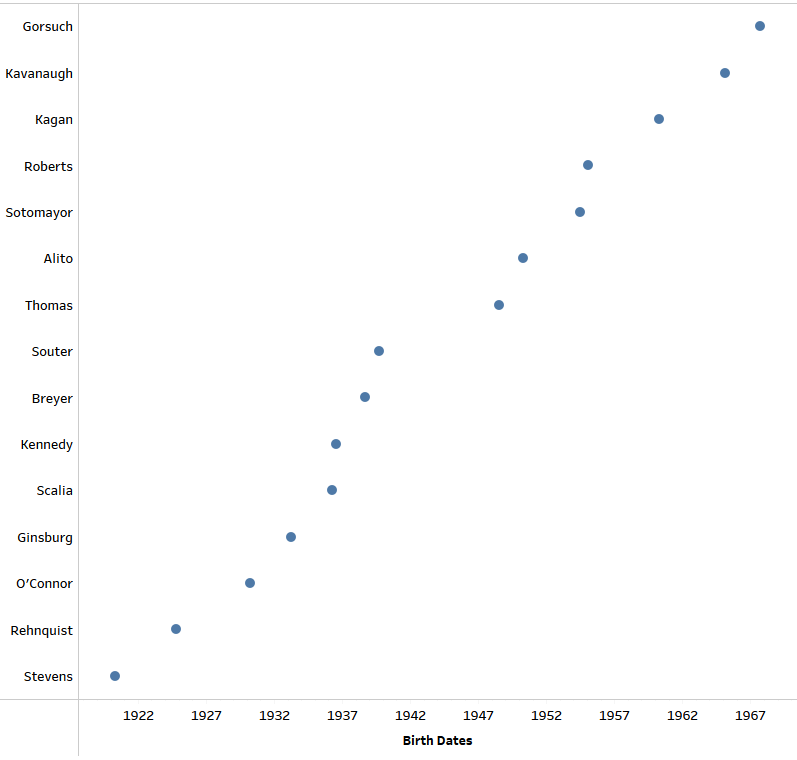Yesterday the Court released a divided decision in Georgia v Public.Resource.Org with Justices Roberts, Kagan, Sotomayor, Gorsuch, and Kavanaugh in the majority and Justices Alito, Thomas, Ginsburg, and Breyer in dissent. As several folks pointed out, this was an interesting split of the justices since the majority was composed of the five younger justices on the Court and the dissent was composed of the four eldest members. This was particularly intriguing in a case dealing with copyright and technology as it suggests the inter-generational split might have something to do with views according to the justices’ ages. This was also intriguing because of how unusual it is to see the justices split in majority and dissent by their ages.
The last time this happened was in OT 1990 when four cases were decided by 5-4 votes with the coalitions split by age. In OT 1990, these justices were Kennedy, Scalia, O’Connor, Rehnquist, and Souter in the majority and White, Blackmun, Stevens, and Marshall in dissent. These coalitions make much more sense ideologically than split in Georgia v. Pubic.Resource.Org as the 1990 coalitions have generally more conservative justices in the majority and generally more liberal justices in dissent as shown below.
The justices are arranged in order of date of birth in the following figure
Between OT 1990 and OT 2019 this means that a number of justice compositions based on age were never in 5-4 majorities together when the older justices were in dissent. These include:
- Roberts, Alito, Kagan, Gorsuch, and Sotomayor
- Roberts, Alito, Kagan, Thomas, and Sotomayor
- Roberts, Alito, Breyer, Thomas, and Sotomayor
- Roberts, Alito, Breyer, Thomas, and Souter
- Roberts, Scalia, Breyer, Thomas, and Souter
- Kennedy, Scalia, Breyer, Thomas, and Souter
- Kennedy, Scalia, Breyer, Ginsburg, and Souter (these four were together in one majority in OT 2004 in Granholm v. Heald but they were not the youngest justices on the Court at the time)
- Kennedy, Scalia, O’Connor, Ginsburg, and Souter
The four cases with Kennedy, Scalia, O’Connor, Rehnquist, and Souter in the majority in OT 1990 were:
- Wilson v. Seiter: A prison inmate’s suit under 42 U.S.C. 1983 for cruel and unusual punishment by prison officials
- Barnes v. Glen Theater: Theaters with nude performers First Amendment suit in Indiana against a state law prohibiting complete nudity in public places.
- Schad v. Arizona: Dealing with jury instructions in capital cases.
- Harmelin v. Michigan: An Eighth Amendment case dealing with cruel and unusual punishment when mitigating factors are not considered in mandated sentences.
Notice that three of the four cases are in the areas of criminal law.
On Twitter: @AdamSFeldman

